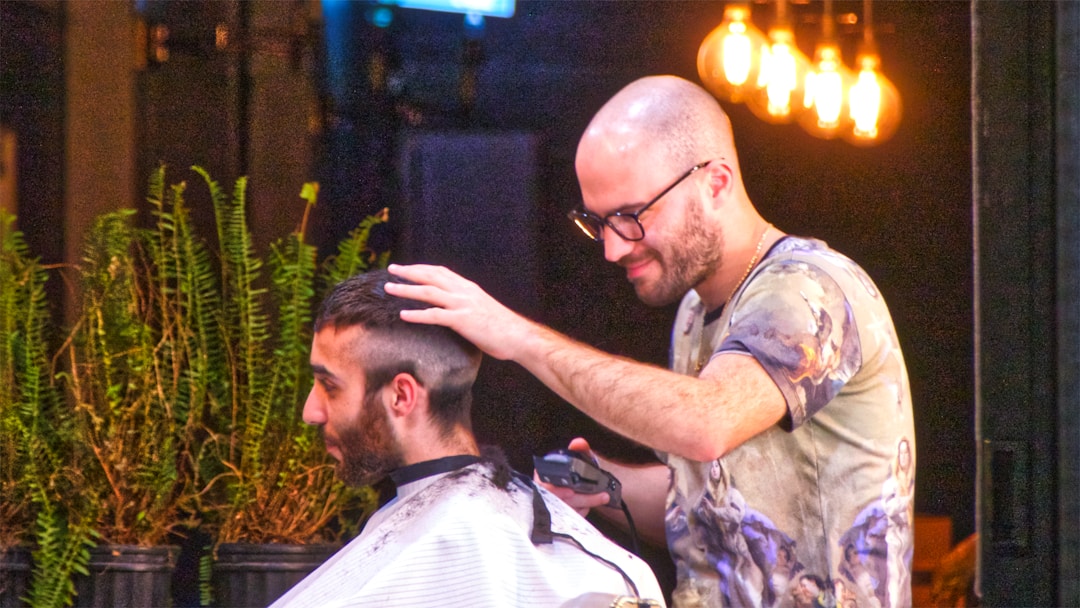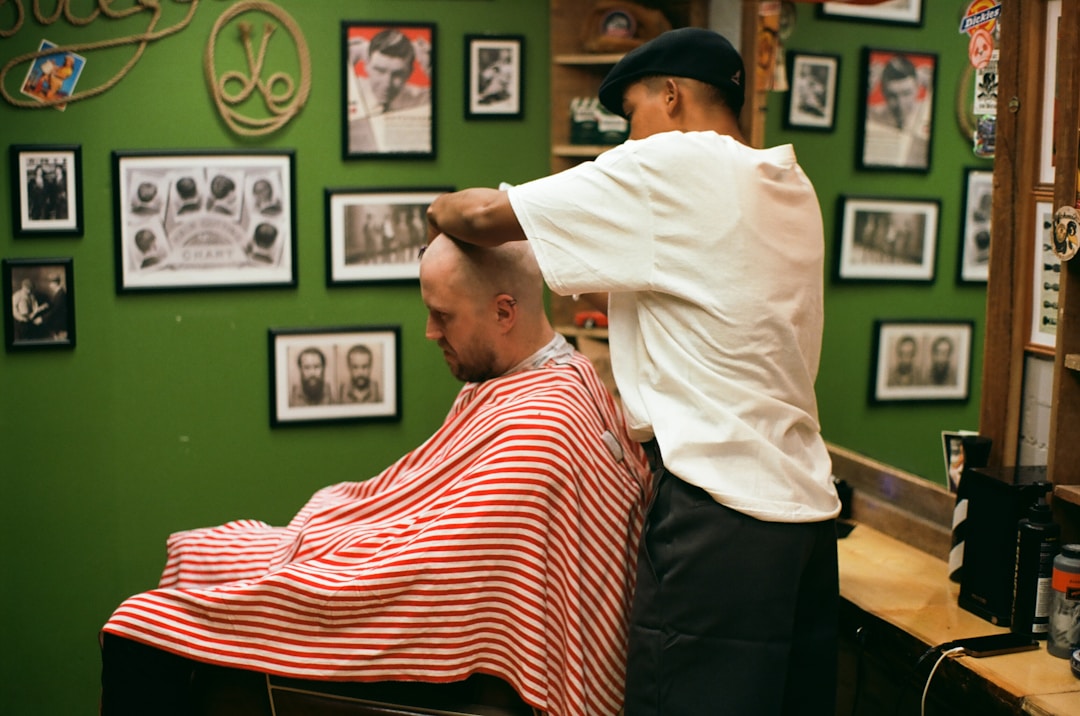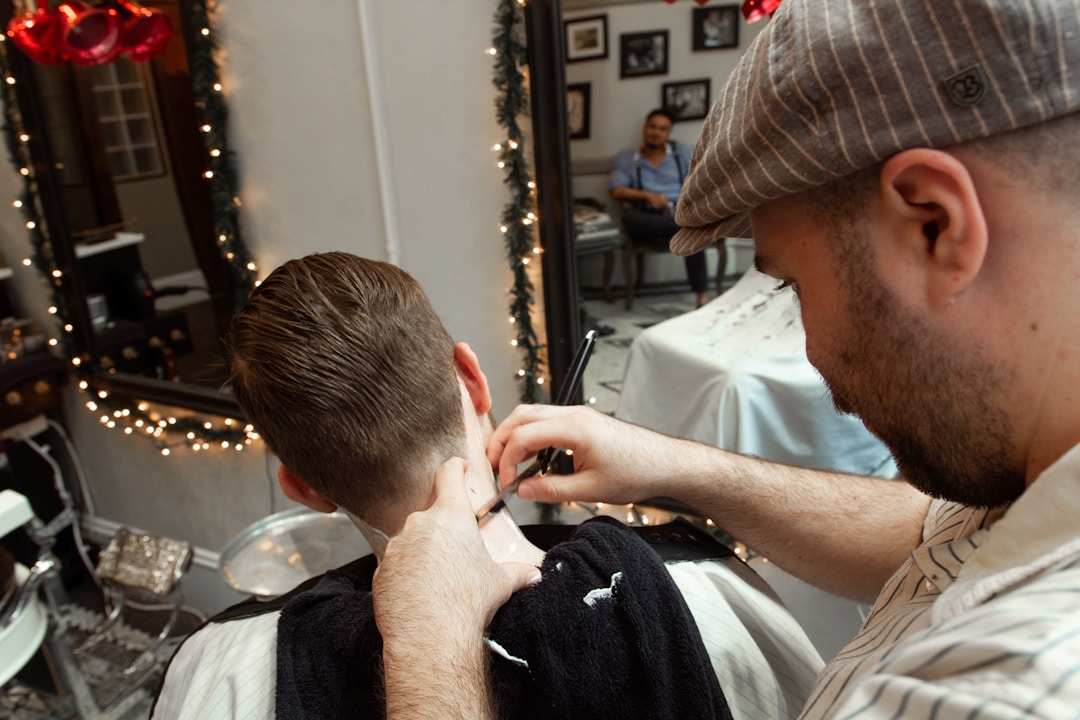Low Fade for Thinning Hair: Complete Solutions Guide 2025
Master low fade haircuts for thinning hair with strategic placement, camouflage techniques, styling solutions, and confidence-building approaches from Queens NYC professional barbers.

Thinning hair doesn't mean sacrificing style or confidence. In fact, the low fade haircut is one of the most effective styles for men experiencing hair loss, receding hairlines, or overall thinning. When executed strategically, a low fade creates clean, intentional structure that draws attention to sharp styling and grooming rather than hair density.
This complete guide provides practical solutions for men with thinning hair seeking low fade haircuts. We cover strategic placement techniques, styling approaches that maximize volume and coverage, product recommendations, and most importantly, how to work confidently with your hair's current state rather than fighting against it.
Why Low Fades Work Exceptionally Well for Thinning Hair
Low fade haircuts offer strategic advantages for men with thinning hair that other styles simply cannot match. Understanding these benefits helps you approach your haircut with confidence rather than anxiety.
1. Reduces Visual Contrast
By keeping sides very short, the fade minimizes the contrast between full hair and thinning areas. This creates more uniform appearance across the entire head rather than dramatic differences between thick and thin sections.
2. Creates Intentional Structure
The clean, precise lines of a low fade project deliberate grooming and style. Observers see intention and structure rather than focusing on hair density. The fade becomes the focal point, not your thinning.
3. Maximizes Remaining Hair
By concentrating remaining hair on top while fading sides, you create the illusion of fuller hair. The contrast makes top hair appear denser than it would with uniform length all around.
4. Offers Multiple Length Options
Low fades work with very short buzz cuts (1/4 inch) or slightly longer textured styles (1-2 inches), allowing you to choose what works best for your specific thinning pattern and comfort level.
5. Modern and Age-Appropriate
Low fades look contemporary and intentional at any age. Unlike outdated styles that can emphasize hair loss, low fades project confidence and awareness of current grooming standards.
6. Easy Maintenance
Thinning hair often becomes difficult to style. Low fades with shorter tops require minimal product and effort while still looking polished - reducing daily frustration and time spent on hair.
Mindset Shift: The goal isn't to "hide" thinning hair - attempting to disguise it often makes it more noticeable. Instead, the low fade creates an alternative visual focus: clean styling, sharp edges, and intentional grooming that commands respect regardless of hair density.
Best Low Fade Styles for Different Thinning Patterns
The optimal low fade style depends on your specific thinning pattern. These strategic approaches address different types of hair loss while maintaining modern aesthetics.
For Receding Hairlines and Temple Thinning
Challenge: M-shaped recession at temples, creating widow's peak or prominent forehead
Solution: Textured Crop with Forward Styling
Keep hair 1-2 inches on top with heavy texturing and point cutting. Style forward onto forehead to minimize exposed temple area. The low fade creates clean sides while textured top draws attention to styling rather than hairline shape.
Styling Key: Use matte products, blow-dry forward, create messy texture that naturally covers temple recession without looking like a combover.
For Overall Crown and Top Thinning
Challenge: Diffuse thinning across entire top and crown area, visible scalp through hair
Solution: Low Fade with Short Buzz Cut (1/4 - 1/2 inch)
Embrace shorter length that eliminates the weight causing thinning hair to clump and expose scalp. The uniform short length creates consistent appearance while the low fade maintains modern structure and style.
Confidence Factor: This is "owning it" with style. The clean, short aesthetic projects confidence and purpose rather than attempting to disguise obvious thinning.
For Mild to Moderate Overall Thinning
Challenge: Noticeable thinning but still substantial coverage, hair looks "wispy"
Solution: Low Fade with Textured 1-1.5 Inch Top
Maintain enough length for styling while using texture to create visual density. Heavy point cutting and choppy layers create separation and movement that disguises thinning more effectively than blunt, uniform cutting.
Styling Key: Apply volumizing products at roots, use matte clay for texture, create "messy" separation rather than slicked or combed styles that expose scalp.
For Patchy or Irregular Thinning
Challenge: Uneven thinning with some areas fuller than others, creating imbalanced appearance
Solution: Caesar Cut with Low Fade
The forward-brushed Caesar style with horizontal fringe creates uniform appearance across the top, minimizing attention to specific thin patches. The low fade keeps sides clean and structured while the Caesar's blunt fringe creates a defined forward line.
Why It Works: The horizontal cutting and forward styling create visual continuity that disguises irregular thinning patterns better than styles with varied directions.
Professional Cutting Techniques for Thinning Hair Low Fades

Experienced barbers use specialized techniques when cutting thinning hair to maximize visual density while creating styles that work with - not against - your hair's current state.
Texturizing for Visual Density
Creating Separation and Movement
Thinning hair benefits enormously from texturizing techniques that create separation and prevent the wispy, limp appearance that occurs with uniform cutting. These methods create visual interest that distracts from density issues.
Point Cutting Throughout
Cutting into hair ends at angles rather than straight across creates natural texture and prevents the blunt, see-through appearance of uniformly cut thinning hair.
Choppy Layering
Creating short, irregular layers adds dimension and prevents thinning hair from lying flat against the scalp. The varied lengths create shadows and depth that suggest fuller hair.
Razor Texturizing (Selective)
Light razor work can create soft, feathered edges that blend thinning areas. Must be used sparingly to avoid further weakening already-fine hair.
Strategic Fade Placement
Customizing Fade Height and Intensity
The placement and aggressiveness of the fade should be adjusted based on where thinning is most prominent to create optimal visual balance.
Lower Fade for Temple Recession
Keep fade starting point low (0.5-1 inch above ear) when temples are receding. This minimizes the vertical exposure of thin temple areas.
Subtle Blend for Overall Thinning
Use gradual, subtle fade transitions rather than dramatic contrasts when hair is thin throughout. Sharp contrasts can emphasize rather than minimize thinning.
Balanced Proportions
Ensure the ratio of fade height to top length creates proportionate appearance. Too much contrast can make thinning top hair look even sparser.
Length Management
Optimal Length for Thinning Hair
Length on top is critical - too long and thinning becomes obvious, too short and you lose styling options. Professional guidance helps find the sweet spot.
The 2-Inch Rule
Most thinning hair looks best at 2 inches or less on top. Beyond this length, hair weight causes clumping that exposes scalp. Shorter lengths maintain better distribution.
Gradual Reduction
If transitioning from longer styles, reduce length gradually over 2-3 haircuts. This allows psychological adjustment and helps find optimal length for your specific thinning pattern.
Continuous Assessment
As hair loss progresses, be willing to adjust length. What worked 6-12 months ago may need modification as thinning changes. Stay flexible and pragmatic.
Products and Styling Techniques for Thinning Hair
Strategic product use can dramatically improve the appearance of thinning hair with low fade haircuts. The key is choosing products that add volume and texture without weight.
1. Volumizing Shampoo and Conditioner
Formulated to add body without weighing hair down
How It Helps: Creates lift at roots, makes individual hairs appear thicker, improves overall fullness
Usage: Daily or every other day; focus conditioner on ends only to avoid root flatness
2. Hair Fibers or Thickening Powder
Keratin fibers that cling to existing hair, adding instant visual density
How It Helps: Fills gaps between hairs, covers visible scalp, creates appearance of significantly fuller hair
Usage: Apply to dry, styled hair; shake or spray onto thin areas; set with light hairspray
3. Matte Clay or Fiber Products
Texture without shine or weight
How It Helps: Creates separation and texture that disguises thinning; matte finish prevents scalp shine-through
Usage: Small amount to dry hair; work through with fingers for separation; avoid over-application
4. Root-Lifting Spray or Powder
Adds volume specifically at the roots
How It Helps: Lifts hair away from scalp, creating illusion of density; prevents flat appearance
Usage: Apply to roots on damp hair before blow-drying, or to dry hair at roots for instant lift
5. Light Mousse
Adds body and hold without weight
How It Helps: Creates fullness throughout hair; provides structure for styling without heaviness
Usage: Golf-ball sized amount to damp hair; distribute evenly; blow-dry for maximum effect
6. Texturizing or Sea Salt Spray
Creates piece-y texture and separation
How It Helps: Adds grit and texture that makes hair appear thicker; creates movement and dimension
Usage: Spray on damp hair before styling, or on dry hair for additional texture and grip
Daily Styling Routine
Morning Styling Process (10-15 minutes)
- Wash with volumizing shampoo (or wet hair if not washing day)
- Apply root-lifting spray or mousse to damp hair, focusing on roots
- Blow-dry with fingers lifting hair up and away from scalp - critical step for volume
- Apply small amount of matte product (clay, fiber, or paste) working through for texture
- Style into desired shape using fingers for separation and natural appearance
- Apply hair fibers if desired to specific thin areas for additional coverage
- Light hairspray to set (optional, for all-day hold)
Key Technique: Blow-drying is non-negotiable for thinning hair. Air-drying causes hair to lay flat against scalp, emphasizing thinning. 5 minutes of blow-drying makes dramatic difference in appearance.
Product Application Rules for Thinning Hair
- Less is Always More: Thinning hair gets weighed down easily. Start with minimal product and add only if needed.
- Apply to Roots First: Volume at roots is critical. Apply products from roots outward rather than working from ends back.
- Avoid Shine Products: Shiny pomades and gels make scalp more visible. Stick to matte finishes for thinning hair.
- Layer Products Strategically: Pre-styler for volume, styling product for texture, fibers for density - each serves specific purpose.
- Reapply Throughout Day if Needed: Thinning hair may require mid-day touch-ups. Carry small amount of product for quick refreshes.
Maintenance Schedule for Thinning Hair Low Fades

Regular maintenance is even more critical with thinning hair. Grown-out haircuts make thinning more apparent, while consistent professional grooming maintains the structure and visual balance that minimizes hair loss appearance.
| Frequency | Service | Why It Matters |
|---|---|---|
| Daily | Styling routine, product application | Creates volume and coverage |
| Every 2 Weeks | Professional fade refresh (optimal) | Maintains sharp structure and minimizes thinning visibility |
| Every 3 Weeks | Fade refresh (acceptable) | Still presentable but losing optimal structure |
| Every 4-6 Weeks | Full haircut with length adjustment | Reassesses top length, manages any progression |
Professional Insight: Many men with thinning hair find that more frequent maintenance actually reduces anxiety about their hair. The consistent clean appearance provides confidence, and regular barber visits allow for ongoing adjustments as thinning progresses.
Confidence and Mindset: The Missing Piece
While techniques and products matter, the most important factor in successfully wearing a low fade with thinning hair is mindset and confidence. How you carry yourself has more impact than hair density.
1. Focus on What You Can Control
You cannot control hair loss progression, but you can control grooming, style choice, fitness, and personal presentation. Invest energy in controllable factors.
2. Embrace Clean, Intentional Styling
Men with well-maintained low fades project confidence and self-awareness regardless of hair density. Sharp grooming commands respect.
3. Understand Others Notice Far Less Than You Think
You scrutinize your hair daily. Others barely register it. What they notice is your overall presentation, confidence, and how you carry yourself.
4. Consider That Many Successful Men Have Thinning Hair
Hair density doesn't determine success, attractiveness, or capability. Countless confident, successful men wear low fades with thinning hair exceptionally well.
5. Know When to Embrace Shorter Styles
If you're spending significant mental energy worrying about thinning hair, going shorter often brings relief and increased confidence. Many men report feeling liberated after embracing buzz cuts or very short styles.
A Word from Professional Barbers
"We see hundreds of men with thinning hair. The ones who look best aren't necessarily those with the most hair - they're the ones who own their style confidently. A well-maintained low fade with the right attitude looks infinitely better than trying to hide obvious thinning with outdated styles. Work with what you have, keep it clean and sharp, and carry yourself with confidence. That's what people actually notice."
- Professional Barber, 15+ years experience
Related Low Fade Resources
Frequently Asked Questions
Expert Low Fade Haircuts for Thinning Hair
Visit DIDA Hair Studio in Queens, NYC for professional low fade haircuts customized for thinning hair. Our experienced barbers understand strategic placement, camouflage techniques, and styling solutions that maximize your hair's appearance while building confidence.